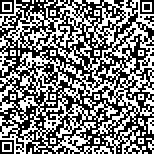| 摘要: |
| 实验中将15kHz超声波引入R141b和水体系,反应过程在恒温水浴中进行,对超声探头处于不同位置、不同过冷度情况下分别研究.结果表明在超声启动后5秒内就出现大量水合物浆,成核对过冷度的依赖程度降低,但结晶完成时间随过冷度的增加而减少.在同样条件下,探头位于两相界面处,消耗的能量较低.分析结果认为这可能与超声空化产生的一系列效应有关. |
| 关键词: 热工学 气体水合物 超声结晶 自由基成核反应 超临界成核反应 |
| DOI: |
| Revised:July 13, 2004 |
| 基金项目:国家自然科学基金 |
|
| Experiment on Sonocrystallisation of Gas Hydrate |
|
|
|
| Abstract: |
| The sonocrystallisation experiment of gas hydrates within a water bath was carried out in a 15 kHz ultrasonic field. First, the influence of the different positions of the probe in the liquids on the process was investigated. Second, the comparison of the results at different supercooling was performed. A great deal of gas hydrate slurry was observed just in 5s after ultrasonic waves passed through the fluid system, and nucleation less depends on the supercooling. However, the growth time decreases with the supercooling increase. The energy consumption is lower under the same conditions with the probe at the interface. It is suggested that these results be caused by the effects of the ultrasonic cavitation. |
| Key words: Pyrology,gas hydrates,sonocrystallation,free radical nucleation,supercritical nucleation |


